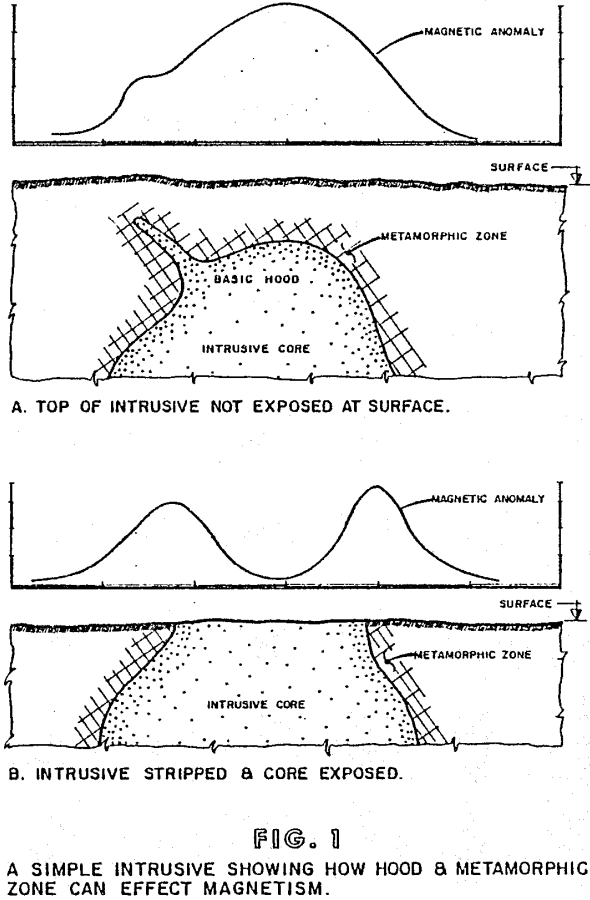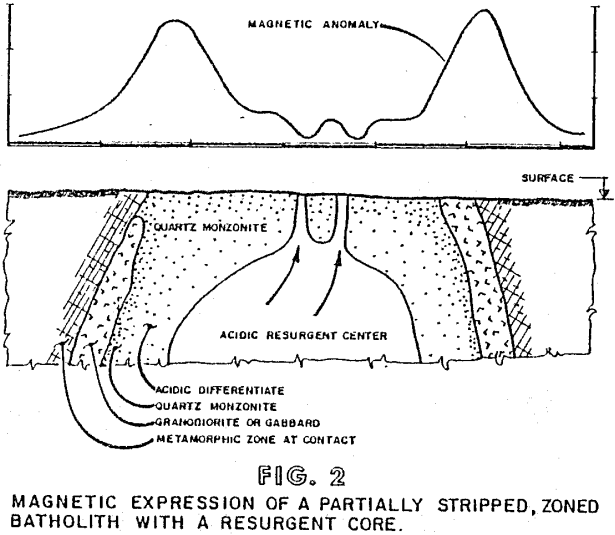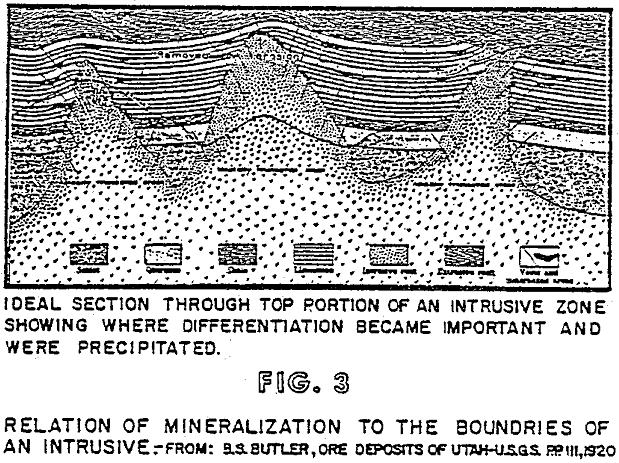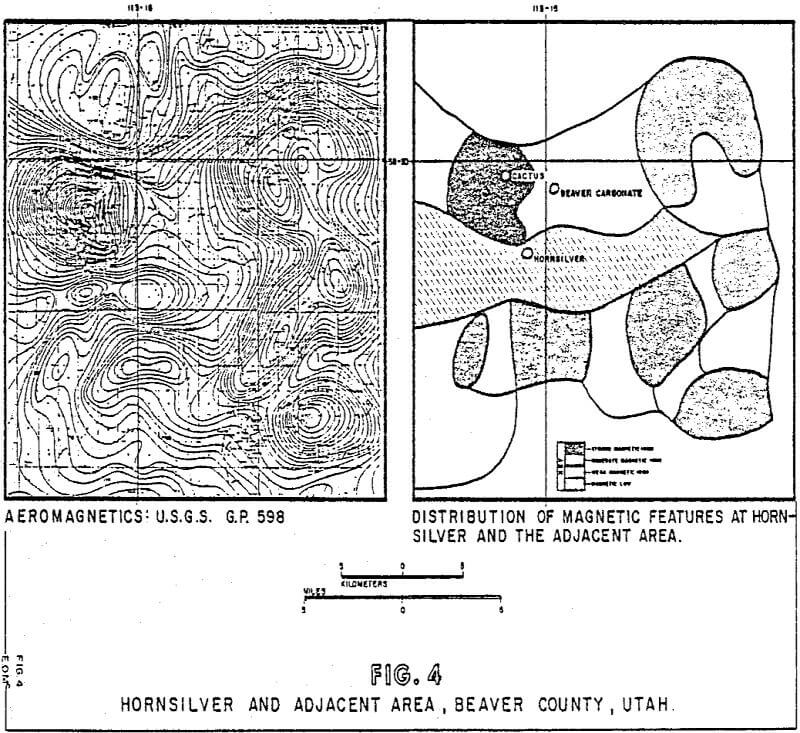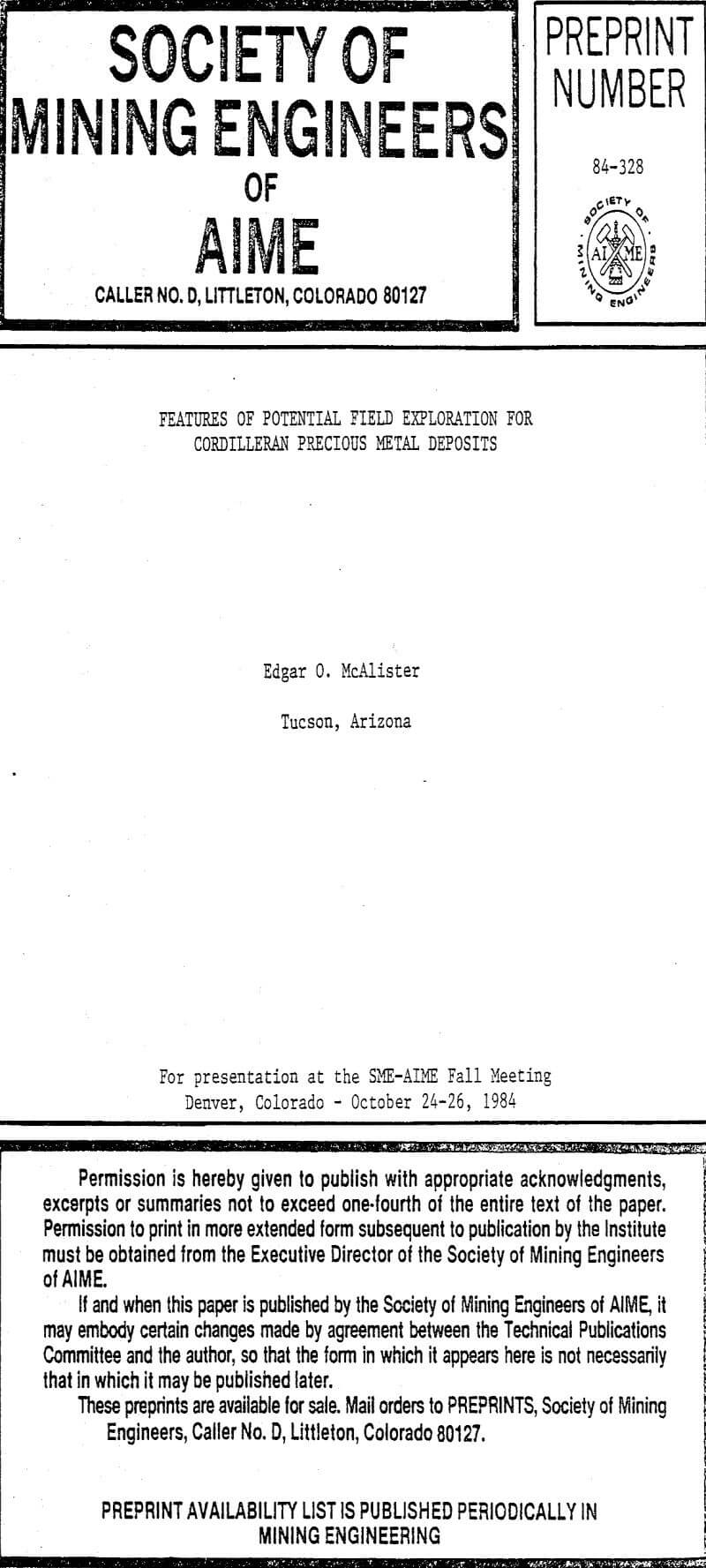Since the use of potential field methods in the search for cordilleran precious metal deposits provides information on the three- dimensional locations of intrusive margins detailed potential field data would be most useful. High quality, detailed aeromagnetics and gravity information is not generally available in the initial prospecting stage, however. Regional aeromagnetics and gravity are available, but regional gravity coverage is not dense enough to use for boundary positioning. Regional gravity can be used to help establish intrusive continuity in depth, to estimate the intrusive composition, and to estimate alluvial depths.
General Discussion
As noted in part A of figure 1, the magnetic response of a simple intrusive of the Cordilleran Type is often caused by a basic intrusive hood and a metamorphic zone developed in the host rocks adjacent to the intrusive. Both hood and metamorphic zone generally contain more magnetite than the interior of the intrusive, where the more acidic differentiate remains. In addition to this the magnitude of the magnetic response also depends on the intrusive type and the characteristics of the various host rocks which make up the metamorphic zone.
For the special case of batholiths or stocks with resurgent cores, the ore deposits still cluster above and on the flanks of both the original and resurgent intrusives. This results in ore deposits occupying sensible but unexpected positions as the brief discussion of precious metal deposits of the Boulder Batholith will show.
Because magnetics can help define the underlying architecture of both exposed and covered intrusive margins, it can be used to point out where likely prospecting targets exist. More detailed magnetics results in better target definition. Modelling techniques as well as upward and downward continuation give the interpreter better three-dimensional insights.
Other magnetic features can occasionally be seen, such as small alteration lows which develop if the host rocks are magnetic. For deposits developed in non-magnetic host rocks no local effects can be seen unless magnetic skarn zones are developed.
